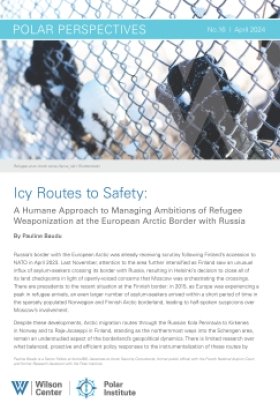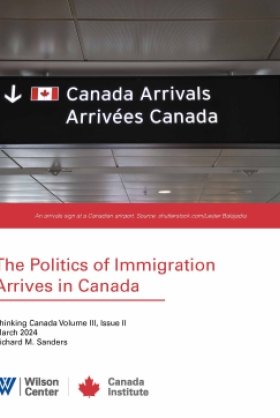New Technologies of Border Control in an Enlarging Europe
Reynold Koslowski, Associate Professor of Political Science, Rutgers University
Overview
New Technologies of Border Control in an Enlarging Europe
June 2, 2004
Staff-prepared summary of the EES informal discussion with Reynold Koslowski, Associate Professor of Political Science, Rutgers University
The European Union (EU) has taken international cooperation on border control and migration further than any other region. With the most recent wave of enlargement, the EU's external border shifted dramatically to the East. This "big boom" had little impact on the external border control, since all accession countries needed to adopt EU standards prior to enlargement. The EU's internal borders are a different story. Whereas EU 15 enjoy open borders and free movement of goods, services and people, borders between the ten new member states and the EU 15 still exist. Ireland and Sweden are the only countries allowing limited free movement of labor. Moreover, although the new member states have adopted Schengen standards for border control and visa regulation, they will not be part of the Schengen space until the other EU member states deem them ready. The heightened risk of the post-September 11 world is a strong motivation both for strengthening EU external border controls and limiting the openness of the internal borders to the EU15 from the new member states.
During his presentation, Rey Koslowski, compared European and US border control strategies. This is problematic, since there is no European counterpart to the US Department of Homeland Security. But by simply comparing border patrol sizes, border control divisions of several EU countries are much larger than that of the US, despite the fact that the Americans have a much larger border to defend. EU cooperation on border control was improved greatly in 1995 with the adoption of the Schengen Convention, which established a common visa policy and the Schengen Information System (SIS)—a shared database listing individuals denied entry into any Schengen country, as well as tracking lost or stolen passports and wanted or missing persons. Although the SIS was a breakthrough at the time, it is hampered by the fact that it can only transmit words and has a limited growth potential (it was designed to accommodate a maximum of 18 countries). To resolve these shortcomings, the EU has proposed launching an "SIS II" in 2007, which would allow all EU member states to have access to it, as well as enable the transfer of photos, with a faster five-second response time.
New US regulations have spurred change in European border policies as well. In 2001, Congress passed the Aviation and Transportation Security Act, which requires airlines to electronically submit passenger records to facilitate processing at the border. Several EU airlines resisted, however, as it violated EU data protection rules by subjecting millions of EU passengers to surveillance by a third country. An interim solution was reached and compliance was not enforced until March 2003. By 2006, all new passports will be required to have a biometric data chip that will hold information like a digital photo and a fingerprint that can be read at the border. This transatlantic skirmish brings up a central problem of increased security: biometric technology is evolving more quickly than regulations limiting government access and information sharing of people's data. At the moment, European law limits the ability for governments and corporations to share biometric information at a higher level than US law. Further cooperation between the EU and the US will depend on resolving this ethical and legal dilemma.
Furthermore, it is difficult for the US to impose requirements on the EU since the US has neither the technology or staff required to implement its own requirements, nor the capacity to process the additional data. Currently, the US operates a visa waiver program with Slovenia and the EU-15 (except Greece). The US is skeptical about granting other new member states visa waivers, as it remains concerned with terrorist threats and the risk of increased immigration.
Hosted By

Global Europe Program
The Global Europe Program is focused on Europe’s capabilities, and how it engages on critical global issues. We investigate European approaches to critical global issues. We examine Europe’s relations with Russia and Eurasia, China and the Indo-Pacific, the Middle East and Africa. Our initiatives include “Ukraine in Europe” – an examination of what it will take to make Ukraine’s European future a reality. But we also examine the role of NATO, the European Union and the OSCE, Europe’s energy security, transatlantic trade disputes, and challenges to democracy. The Global Europe Program’s staff, scholars-in-residence, and Global Fellows participate in seminars, policy study groups, and international conferences to provide analytical recommendations to policy makers and the media. Read more
Thank you for your interest in this event. Please send any feedback or questions to our Events staff.









